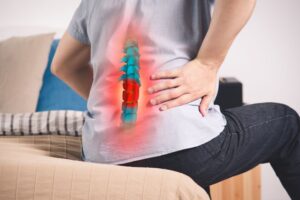
Herniated spinal discs, also known as slipped discs, are a relatively common spinal condition among adults. This issue can cause sharp, shooting back pain, decrease your mobility, and just make you plain miserable! But you may wonder if you should just wait it out, or if you will need extensive medical care to find relief. Will a slipped disc heal on its own? This blog post explains what you should know.
Recovery Timeline for a Slipped Disc
The healing journey for a slipped disc varies significantly from person to person. Often, though, this issue does resolve on its own or with minimal intervention.
In many cases, symptoms will begin to improve within a few weeks with conservative care. For some individuals, the discomfort may subside in as little as two to four weeks, while others might experience symptoms for several months. The timeline depends on such factors as the location and severity of the disc herniation, age, activity level, and overall health status.
Home Remedies that Might Help
Managing a slipped disc at home is possible for many individuals, especially when symptoms are mild and manageable. Several self-care strategies may provide relief and promote healing:
- Rest and Activity Modification: Short periods of rest may help reduce acute pain, but prolonged inactivity can delay recovery. Be gentle with your movements, and be sure not to overexert yourself. Try to avoid any twisting motions, which may worsen your pain.
- Cold and Heat Therapy: Applying a cold pack to the affected area can decrease inflammation, while heat therapy may help relax tense muscles and relieve pain.
- Over-the-Counter Medications: Nonsteroidal anti-inflammatory drugs (NSAIDs), such as ibuprofen or naproxen, can help reduce pain and inflammation.
- Gentle Stretching: Simple stretches that do not strain the back can help maintain mobility and reduce stiffness.
- Good Posture: Maintaining proper body alignment during sitting, standing, and lifting can help reduce pressure on the spine.
When to See a Doctor
Even though a slipped disc may resolve on its own, you should not take unnecessary chances with your spinal health. It is always a good idea to see a doctor if you have severe or ongoing pain! Here are some signs that you should seek medical attention:
- Persistent pain that does not Improve after several weeks of self-care.
- Numbness, tingling, or weakness in the legs or feet.
- Loss of bladder or bowel control.
- Difficulty with walking or balance.
There are several non-surgical treatment options that may help with a slipped disc:
- Physical Therapy: A customized exercise program can strengthen the back and improve flexibility.
- Medications: Prescription pain relievers or muscle relaxants may help with severe symptoms.
- Epidural Steroid Injections: These injections can reduce inflammation and relieve pain in targeted areas of the spine
- Regenerative Medicine: Regenerative medicine, such as stem cells, PRP, and prolotherapy, can increase your body’s ability to heal itself.
- Surgery: In rare cases, surgery is necessary to address a slipped disc.
A slipped disc may heal on its own, but this condition should never be ignored or minimized! Take good care of your spine so it will take good care of you.
Meet the Practice
At Valley Sports Physicians & Orthopedic Medicine, Dr. Paul Tortland and our team offer a range of treatments for back pain and related symptoms. We can evaluate the condition of your spine and advise you on your next steps. We specialize in non-surgical therapies that help your body heal. To learn more about us or to request a consultation, contact our Glastonbury office at 860-430-9690.
